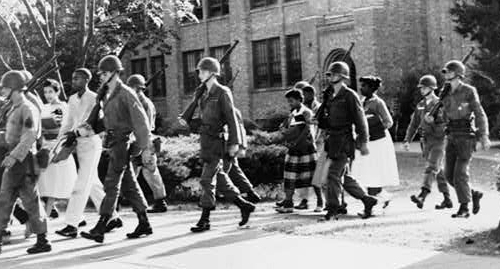
This image appears to be very sad. I thought this was an interesting moment captured because black children of the civil rights movement were always shown as very strong. I never saw one of the students of the movement crying on the ground. This showed that inside of the strong willed protesters they were little kids.
The Years Before the Civil Rights Act of 1964:
Before this act was passed, thousands of children and students took part in boycotts, school integrations, and mass demonstrations (King, 165). These activists were arrested and some even spent nights in jail, which became a sort of badge of honor for these children to be proud of. A notable teenager from McComb, Mississippi, named Brenda Travis was one of these youngsters who stood up for the equal justice of her fellow African Americans. She took part in a lunch counter sit-in and was also later arrested for purchasing a ticket for a white only Greyhound bus. She was given a years detention in a delinquent center for teens and eventually forced to leave the state of Mississippi in exchange for her release. A number of African American civil rights demonstrators from public schools throughout McComb were each expelled and put into prison. When these teenagers were released, they were not permitted to return to their prior local schools, rather they had to enroll in special programs at Campbell College, more than fifty miles away from their hometown. This is just a glimpse at what the student activists went through to stand up for civil rights. These children served as, in a sense, role models to others, including their elders and parents, as they were more willing to fight against segregation and "remain in their places." By: Ashley Mavaro
Little Rock Nine
After the historic ruling of Brown v. Board (1954) a group of African-American students enrolled in Little Rock Central High School in 1957. The students were initially barred from the school by anti-segregation protesters, and the Arkansas national guard.
Twenty days later on September 24, 1957 President Eisenhower ordered the the 101st Airborne Division of the United States Army to Little Rock and federalized the Arkansas national guard. That day the Little Rock Nine finally walked into their high school .




No comments:
Post a Comment